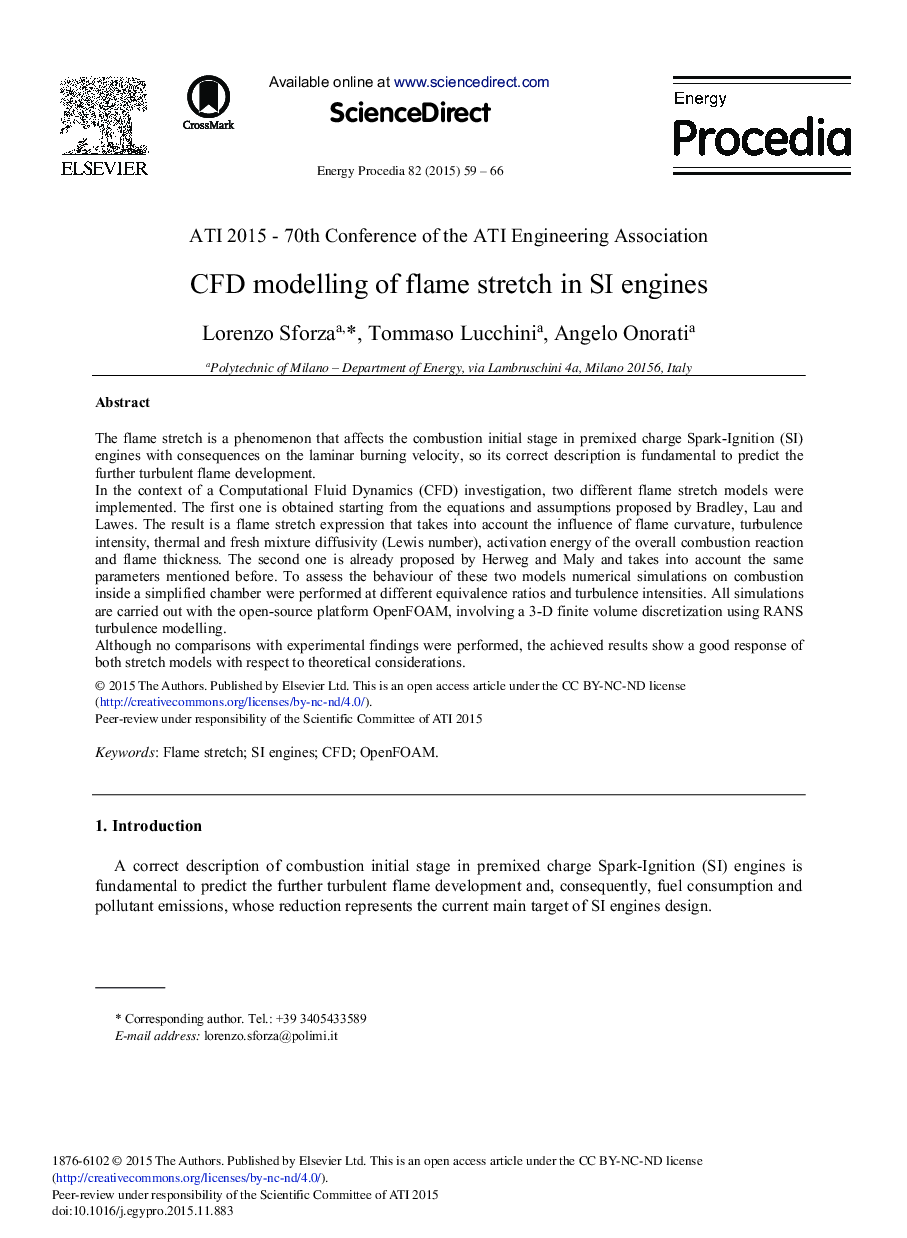| Article ID | Journal | Published Year | Pages | File Type |
|---|---|---|---|---|
| 1509039 | Energy Procedia | 2015 | 8 Pages |
The flame stretch is a phenomenon that affects the combustion initial stage in premixed charge Spark-Ignition (SI) engines with consequences on the laminar burning velocity, so its correct description is fundamental to predict the further turbulent flame development.In the context of a Computational Fluid Dynamics (CFD) investigation, two different flame stretch models were implemented. The first one is obtained starting from the equations and assumptions proposed by Bradley, Lau and Lawes. The result is a flame stretch expression that takes into account the influence of flame curvature, turbulence intensity, thermal and fresh mixture diffusivity (Lewis number), activation energy of the overall combustion reaction and flame thickness. The second one is already proposed by Herweg and Maly and takes into account the same parameters mentioned before. To assess the behaviour of these two models numerical simulations on combustion inside a simplified chamber were performed at different equivalence ratios and turbulence intensities. All simulations are carried out with the open-source platform OpenFOAM, involving a 3-D finite volume discretization using RANS turbulence modelling.Although no comparisons with experimental findings were performed, the achieved results show a good response of both stretch models with respect to theoretical considerations.
